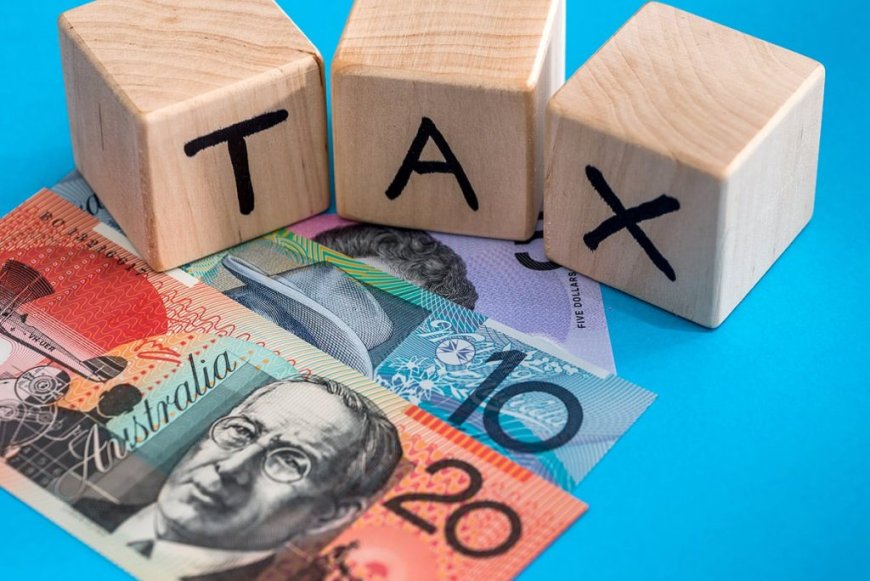Australia’s Tax System Explained: Why High Earners Pay More and How to Optimize Your Taxes Down Under
Australia combines high personal taxes with a robust lifestyle and social benefits. Learn how the Australian tax system works, why high earners face steep rates, and how individuals and businesses can optimize their taxes legally.

Introduction: The Price of Sunshine
Australia is often seen as a dream destination: a thriving economy, pristine beaches, and a high standard of living. But beneath the sunny lifestyle lies a tax system that can be unforgiving, especially for high earners. With some of the highest personal income tax rates in the developed world, Australia ensures that success comes with a heavy bill.
Still, for entrepreneurs, expats, and investors, the system offers opportunities for optimization. In this article, we’ll break down the key features of Australia’s tax system, explain how residency rules determine your obligations, and provide strategies to minimize your burden legally.
👉 For comparison, check our guides on Canada’s tax system and Germany’s heavy gears.
1. Personal Income Taxes: A Progressive Climb
Australia applies a progressive tax system:
-
0% on income up to AUD 18,200 (tax-free threshold).
-
19% from AUD 18,201 to AUD 45,000.
-
32.5% from AUD 45,001 to AUD 120,000.
-
37% from AUD 120,001 to AUD 180,000.
-
45% above AUD 180,000.
On top of this, there’s the Medicare Levy (2%) for healthcare. That means the true top marginal rate is 47% — putting Australia among the most expensive jurisdictions for high earners.
Optimization Strategies for Individuals
-
Superannuation contributions: Pre-tax contributions reduce taxable income.
-
Negative gearing: Popular in real estate — deducting interest on investment property loans.
-
Franking credits: Offsetting taxes on dividends.
-
Residency planning: Avoiding full-year residency can reduce exposure to Australian worldwide taxation.
👉 For high earners, strategies resemble those in Scandinavia’s tax regimes, though Australia has unique real estate deductions.
2. Residency: The Defining Factor
In Australia, your tax burden depends not only on your income but on whether you are a resident for tax purposes.
-
Residents: Taxed on worldwide income.
-
Non-residents: Taxed only on Australian-sourced income, but lose the tax-free threshold.
The “183-day rule” is common, but Australia also uses a “resides test” and domicile test. Even if you spend less than 183 days, you may be considered a resident if you maintain strong ties.
Residency Optimization
-
Digital nomads often structure stays under 183 days while maintaining residence in lower-tax jurisdictions.
-
For expats, careful planning is required when leaving Australia, as the tax office (ATO) aggressively monitors ties.
3. Corporate Taxation: Competitive but Not Low
-
Corporate tax rate: 30% standard.
-
Small businesses (turnover under AUD 50M): 25%.
-
No local/state corporate taxes — all levied at federal level.
Australia is not a low-tax corporate hub like Ireland or Cyprus, but it does provide stability and access to Asia-Pacific markets.
Optimization for Businesses
-
R&D Tax Incentives: Rebates for innovation-heavy businesses.
-
Transfer pricing: Careful structuring with regional offices in Singapore or Hong Kong can reduce global tax.
-
Trust structures: Widely used in Australia to distribute income flexibly among family members and beneficiaries.
4. Goods and Services Tax (GST)
Australia’s GST is 10%, lower than VAT in Europe. It applies to most goods and services, with exemptions for fresh food, medical, and education. While GST adds complexity, it’s relatively modest compared to Europe’s 20%+ rates.
5. Wealth, Property, and Capital Gains Taxes
-
Capital Gains Tax (CGT): Gains on assets held more than 12 months are discounted by 50% for individuals.
-
Property taxes: Land tax varies by state; stamp duty applies on transactions.
-
No wealth tax: Unlike France, Australia doesn’t tax net wealth.
Property investment remains a major tax play, especially with negative gearing.
6. Expats and Foreign Investors
Australia attracts global talent, but foreign workers and investors face unique rules:
-
Non-residents pay a flat 32.5% from the first dollar earned — no tax-free threshold.
-
Foreign investors face restrictions in property markets.
-
Double taxation agreements (DTAs) mitigate some burdens.
👉 For expats considering alternatives, see our article on UK’s post-Brexit system or Cyprus residency options.
7. Criticism and Challenges
Australia’s tax system is often criticized as:
-
Too reliant on income taxes (both personal and corporate).
-
Complex, with aggressive enforcement by the ATO.
-
Burdensome for high earners, leading to brain drain and offshore structuring.
At the same time, the system funds world-class healthcare, education, and infrastructure, making it part of the “Australian social contract.”
8. How to Pay Less in Australia: Legal Pathways
-
Maximize superannuation: Boost retirement savings and reduce taxable income.
-
Use trusts and family structures: Common for entrepreneurs.
-
Invest in property with negative gearing: Deduct losses against income.
-
Consider temporary non-residency: For mobile workers or global entrepreneurs.
-
Explore DTAs: If earning abroad, treaties can prevent double taxation.
Conclusion: The Lucky Country with a Price Tag
Australia is often called “the lucky country,” but when it comes to taxes, luck is in short supply for high earners. With a top rate of 47%, mandatory Medicare levy, and strict residency rules, it can be punishing. Yet, with planning — from superannuation to property deductions, trust structures, and international treaties — it’s possible to significantly reduce the effective tax rate.
👉 Want more details? Check our dedicated guides on Canada, Germany, and Ireland for comparisons with other Tier-1 jurisdictions.
What's Your Reaction?
 Like
0
Like
0
 Dislike
0
Dislike
0
 Love
0
Love
0
 Funny
0
Funny
0
 Angry
0
Angry
0
 Sad
0
Sad
0
 Wow
0
Wow
0

































































